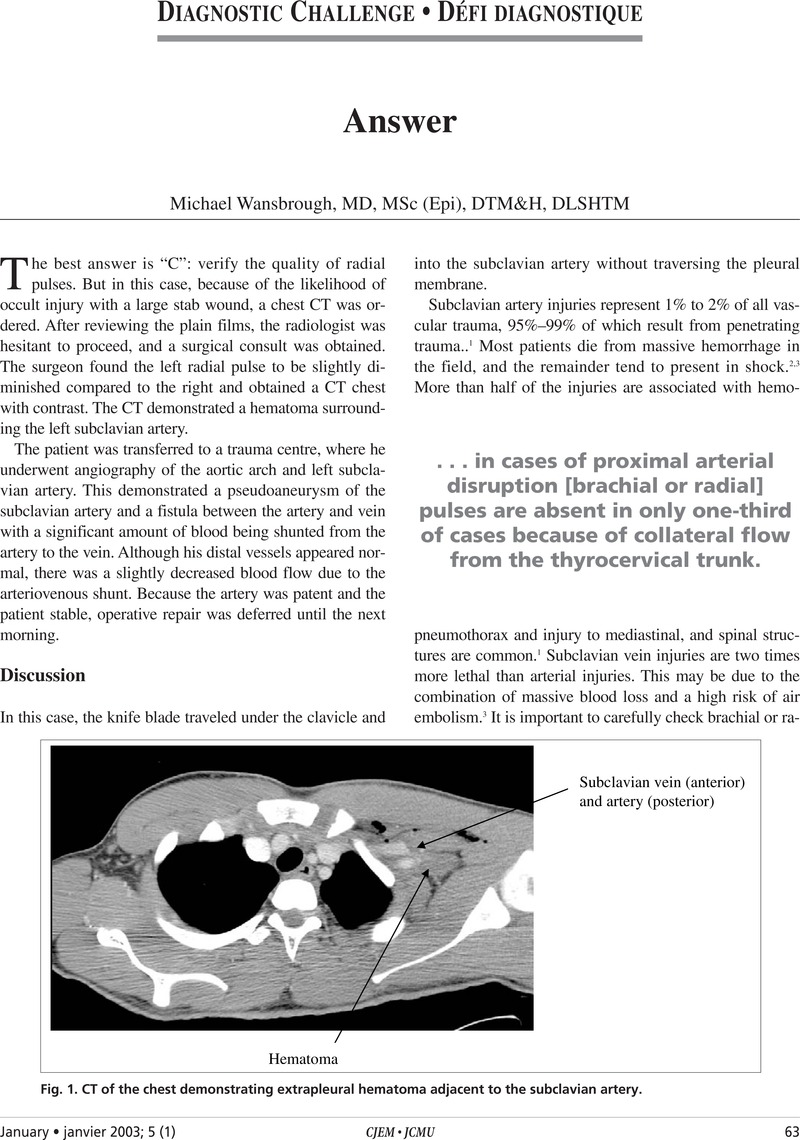No CrossRef data available.
Article contents
Abstract
An abstract is not available for this content so a preview has been provided. As you have access to this content, a full PDF is available via the ‘Save PDF’ action button.

- Type
- Diagnostic Challenge • Défi Diagnostique
- Information
- Copyright
- Copyright © Canadian Association of Emergency Physicians 2003
References
1.Cox, CS, Allen, GS, Fischer, RP, Conklin, LD, Duke, JH, Cocanour, CS, et al. Blunt versus penetrating subclavian artery injury: presentation, injury pattern, and outcome. J Trauma 1999;46:445–9.Google Scholar
2.McKinley, AG, Carrim, AT, Robbs, JV.Management of proximal axillary and subclavian artery injuries. Br J Surg 2000;87:79–85.Google Scholar
3.Demetriades, D, Chahwan, S, Gomez, H, Peng, R, Velmahos, G, Murray, J, et al. Penetrating injuries to the subclavian and axillary vessels. J Am Coll Surg 1999;188:290–5.Google Scholar
4.Demetriades, D, Asensio, JA.Subclavian vascular injuries. Br J Surg 1987;74:1001–3.CrossRefGoogle ScholarPubMed
5.Gasparri, MG, Lorelli, DR, Kralovich, KA, Patton, JH Jr. Physical examination plus chest radiography in penetrating periclavicular trauma: the appropriate trigger for angiography. J Trauma 2000;49:1029–33.CrossRefGoogle ScholarPubMed




